The water level in the Wetlands was low. The shoreline reached out a dozen feet or more from where it had been most of the spring, creating mud flats where there was once water.
As I walked past the viewing area on the north side of the Wetlands, I noticed the mud sparkling in the sunlight. The mud appeared to be alive. There was something, many things, moving on the surface making the mud itself seem to crawl.
I took several pictures, zooming in on the photos to try and make out exactly what it was that was moving down there on the glistening mud. I’d seen these creatures before. They were fly larvae, soldier fly larvae.
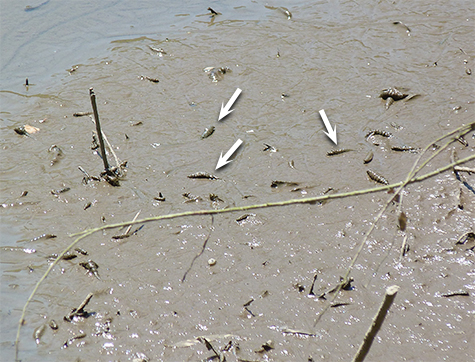
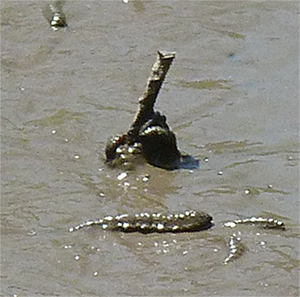
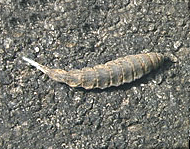
Flashback five years to a warm wet morning in August. I had seen swarms of these larvae crawling out of the water and crossing the pavement following heavy rains the night before.
But now, in summer 2015, it was drier than usual, the Wetlands appeared to be drying up.
later that very night it rained heavily. The Wetlands water level rose to where it had been before the dry period. The next morning soldier fly larvae were on the pavement heading for high ground.
The following day I noticed many more fly larvae at the water’s edge. Some were crawling along the bottom of the shallow water, others lying motionless with their “tails” stuck straight up, breaking the surface of the water.
Adult soldier flies are non-bloodsucking mimics of bees and wasps. There are some 250 species in North America, about half of which have aquatic larval stages. The adults lay their eggs on vegetation or floating debris in the water and the hatching larvae spend the first part of their lives as aquatic insects.
The larvae spend most of their time in shallow water ingesting detritus and algae. They breath air by projecting spiricals at the tip of their abdomens, the “tail,” out of the water.
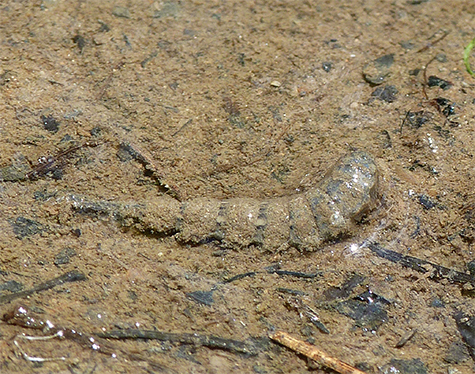
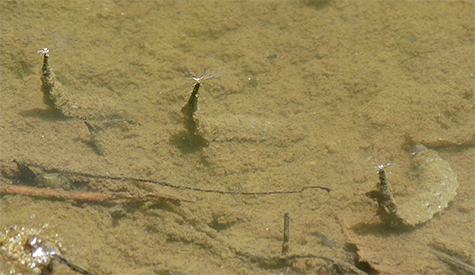
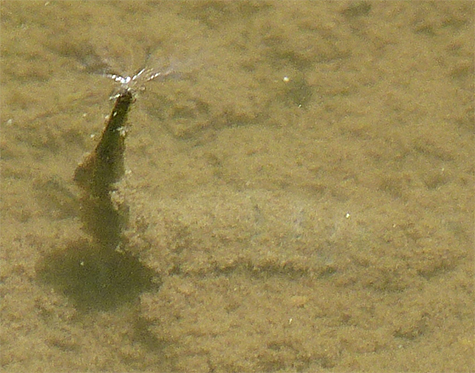
Why the larvae leave the water after heavy rains remains a mystery to me. Perhaps they are seeking higher ground. But, they’re aquatic, they live in the water. Are they moving to dry ground to pupate? Soldier flies in this genus (Stratiomys) are supposed to pupate in the water, floating on the water’s surface. What’s going on here?
The mystery continues.
We just found a bunch of these after some thunderstorms. Thanks for helping us identify them!
Great, glad to be of service!